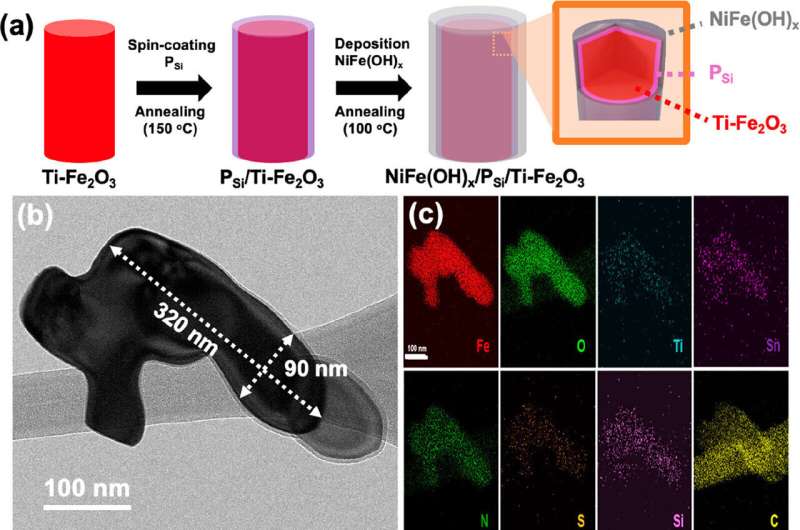This article has been reviewed according to Science X's editorial process and policies. Editors have highlighted the following attributes while ensuring the content's credibility:
fact-checked
peer-reviewed publication
trusted source
proofread
Researchers develop highly efficient and stable photoelectrode for water splitting using organic semiconductors

A team of researchers, led by Professor Ji-Hyun Jang from the School of Energy and Chemical Engineering at UNIST has achieved a significant breakthrough in photoelectrode development.
Through collaborative research with Professor Junghoon Lee from Dongseo University and Dr. Hyo-Jin Ahn from the German Engineering Research and Development Center LSTME Busan, the team successfully created a high-performance and stable photoelectrode by incorporating organic semiconductors as an intermediate layer in existing inorganic semiconductor-based photoelectrodes.
The production of green hydrogen using solar energy involves splitting water into its constituent elements through charges generated in semiconductors that absorb sunlight. Previous studies primarily focused on utilizing inorganic semiconductors for constructing photoelectrodes.
However, organic semiconductors offer several advantages such as lower costs, various process methods, and easier large-scale production. Additionally, their high solar energy conversion efficiency translates to enhanced hydrogen production efficiency. Nevertheless, the susceptibility of organic semiconductors to water damage has limited their application in photoelectrodes.
To overcome this challenge, the research team applied a coating of organic semiconductors onto the surface of conventional iron oxide-based photoelectrodes to ensure stability when exposed to water. Furthermore, they implemented a catalyst (nickel/iron double-layer hydroxide) as an additional protective layer over the coated organic semiconductor to prevent direct contact with water. This innovative approach allowed the charges generated from solar energy absorption to facilitate efficient hydrogen production reactions.
Professor Jang expressed the team's excitement about the research outcomes, by saying, "By overcoming the limitations of traditional inorganic semiconductor-oriented photoelectrodes, we have demonstrated the potential for more extensive utilization of organic semiconductors in hydrogen production through photoelectrodes."
This breakthrough not only opens up new possibilities for enhancing efficiency and stability but also contributes to advancing sustainable energy solutions for a carbon-neutral future.
The study findings have been published in ACS Energy Letters.
More information: Hyo-Jin Ahn et al, Utilizing a Siloxane-Modified Organic Semiconductor for Photoelectrochemical Water Splitting, ACS Energy Letters (2023). DOI: 10.1021/acsenergylett.3c00755


















